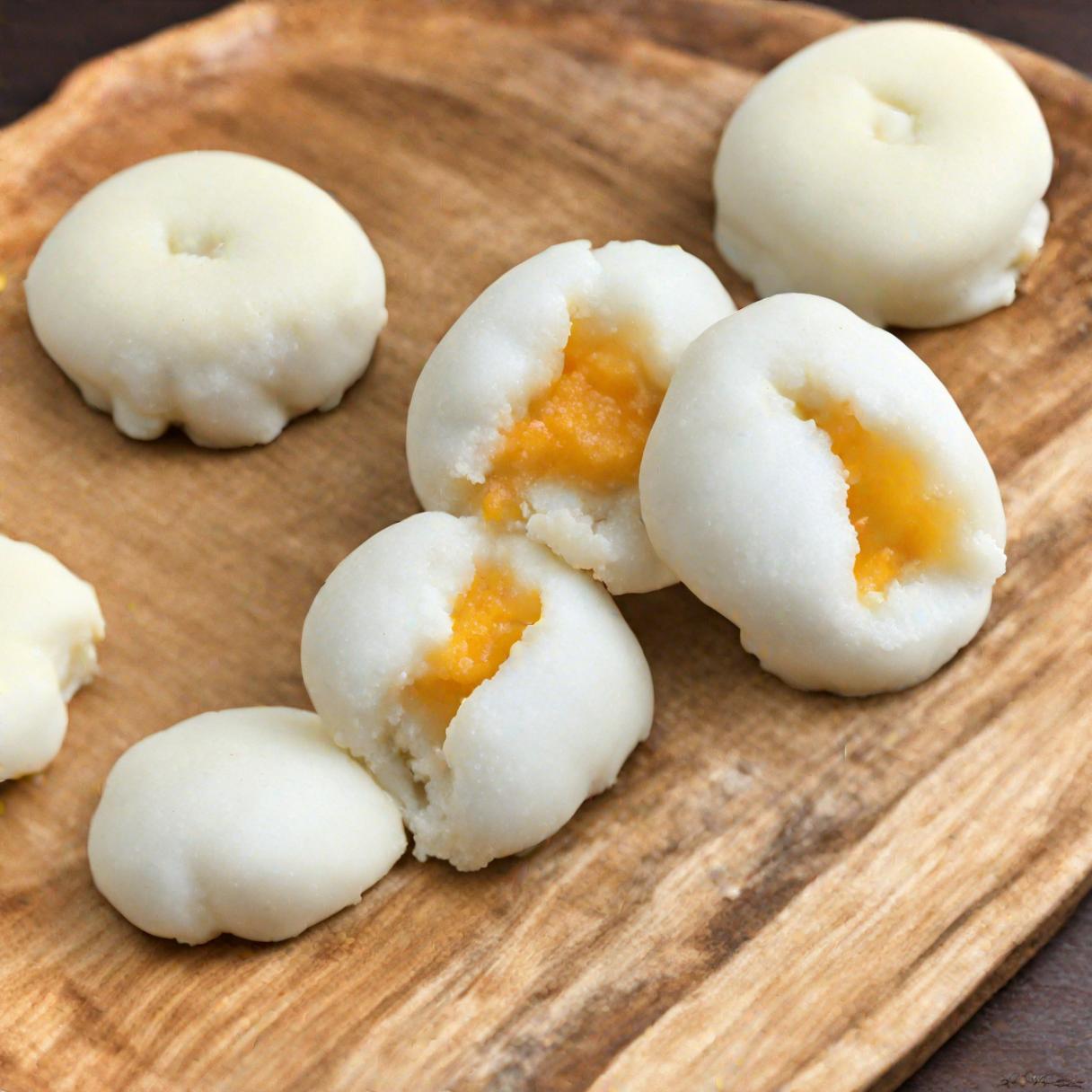Introduction to Mango Mochi
To make mango mochi you must wrap fresh mango or some puree mixed with a sweetener or coconut milk in a shell made from glutinous flour. It’s so important to get these shells right without breaking because if they break then all your hard work goes down the drain.
What makes this new phenomenon that’s spreading around the world so popular is its refreshing flavor and global love for mangoes. By taking traditional Japanese mochi and mixing it with Southeast Asian flavors they created something that anyone can enjoy. Mochi also helps stop people from eating such heavy desserts but still gives them something nice, light, fruit-based food item instead.
Ingredients Breakdown
Typically, milk isn’t used in mango mochi because it’s not needed. So naturally, that makes this dish dairy-free. If you want a creamier texture without adding dairy products you can try using coconut milk or cream in your variation of mango mochi.
Vegan and Dairy-Free Options
It’s no sweat to make mango mochi without dairy. The classic recipe is already dairy-free, so you don’t have to fret about that. Though if you want the vegan version, make sure your sugar isn’t processed with bone char.
The traditional taste and texture of mango mochi stays in tact when using plant-based substitutes.For a filling that’s creamy without the cow stuff, almond milk and coconut milk work well, especially because they have their own tropical flavors that pair perfectly with mango’s fruity taste.
To put it simply, following a vegan diet won’t keep you from devouring this delicious dessert. All it takes is a few easy substitutions from the original recipe to make sure that the true essence of mango mochi comes through.
Nutritional Information
Mango mochi is an exotic version of the traditional Japanese treat. You can enjoy it as a plain snack, with ice cream in the middle or while you’re on the move. Mochi, unlike cookies and cakes, has healthy qualities that set it apart entirely. It is made from sticky glutinous rice flour which means no gluten for those who are intolerant.
Making Mango Mochi at Home
Ingredients:
- 1 cup glutinous rice flour
- 1/4 cup sugar
- 2/3 cup water
- Cornstarch for dusting
- 1 ripe mango, cut into small cubes
- Optional: coconut milk for a creamier filling
Instructions:
Mochi Dough: In a bowl, combine stupid flour and sugar. Slowly add water, stirring constantly until it’s smooth.
Cook the Dough: Cover your bowl with plastic wrap and microwave for 60 seconds. Then stir, cover and microwave another 60 seconds. It should be sticky but cooked!
Shape the Mochi: Sprinkle cornstarch over a surface. Transfer dough onto work surface and let sit for a few minutes till cooled down. Dust your hands with cornstarch and flatten dough into an 8-inch round.
Add the Filling: Put some mango (or spoon some mango combined with some coconut milk) in the center of your flattened dough. Pinch together the edges of your filling to close it up, then turn into a ball shape.
Serve: Dust with more cornstarch to prevent sticking. Enjoy your homemade mango mochi chilled or at room temperature.
FAQs
Can you eat Mango Mochi if you have lactose intolerance? Yes, regular mango mochi does not have any milk or dairy products so it’s lactose-free! However, coconut milk ones are also okay to eat for people with this condition.
Is Mango Mochi gluten-free? You bet! It’s made from glutinous rice flour which is naturally free of the protein. That makes it a great snack option for anyone who wants to stay away from gluten or someone with celiac disease. But always remember, everyone’s body is different! Every individual may react differently to what they eat, especially for people who suffer from allergies. So don’t forget to check the labels for any potential cross-contamination warnings just in case.
Conclusion
This recipe will let you make mango mochi at home. It’s a participatory experience that allows you to adjust sweetness and filling according to taste. Plus, through this hands-on cooking process we hope you’ll learn more about cultural importance of mochi.Integrating Japanese tradition with mango flavor —a favorite worldwide— only makes sense. So feel free to try new flavors or make your own variations of this beloved treat. These creations also give fans an opportunity to connect and share their experiences with one another.
Are you willing to share anything else? If so, we’d love for you to talk about any other tropical sweets or adaptations that are special to your culture! The more we all contribute here, the closer we get to a perfect global recipe…and isn’t that the tastiest goal?

